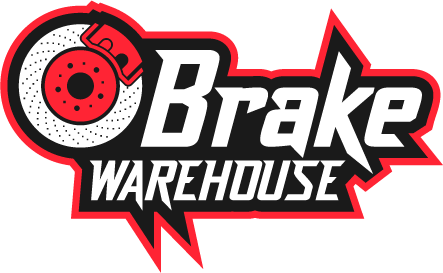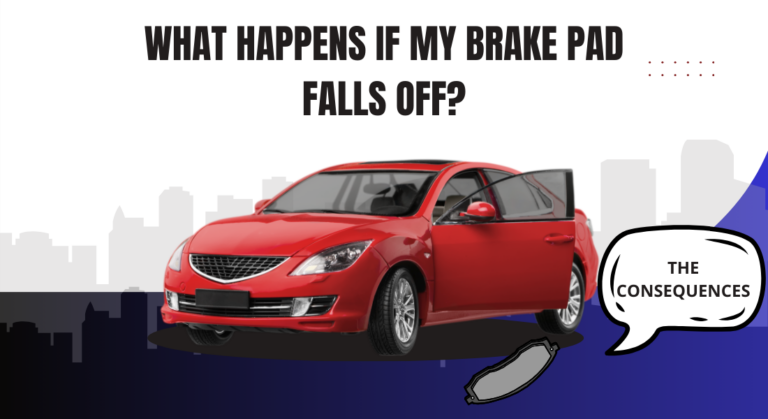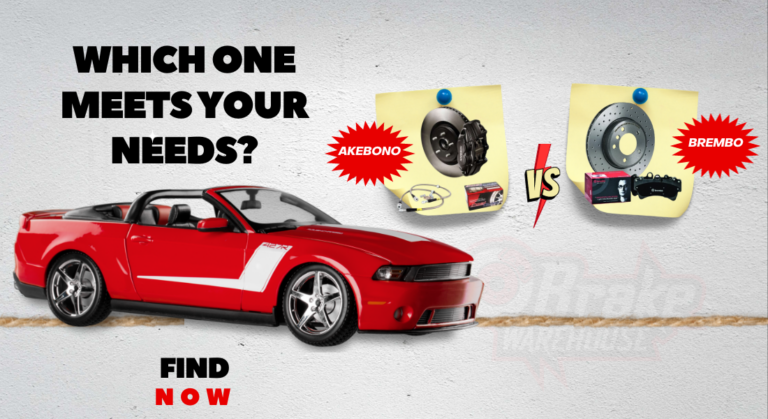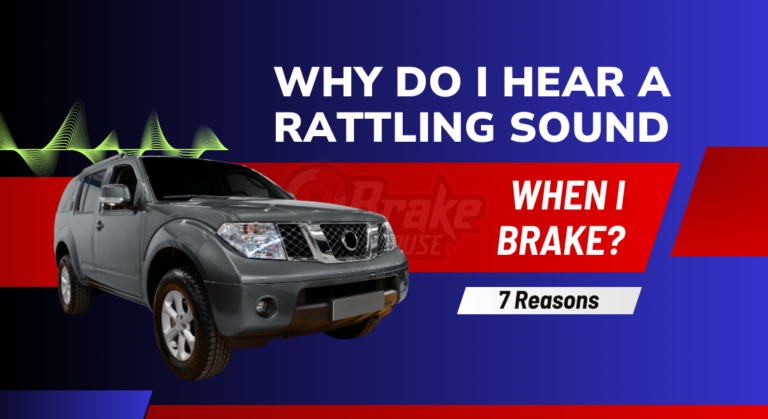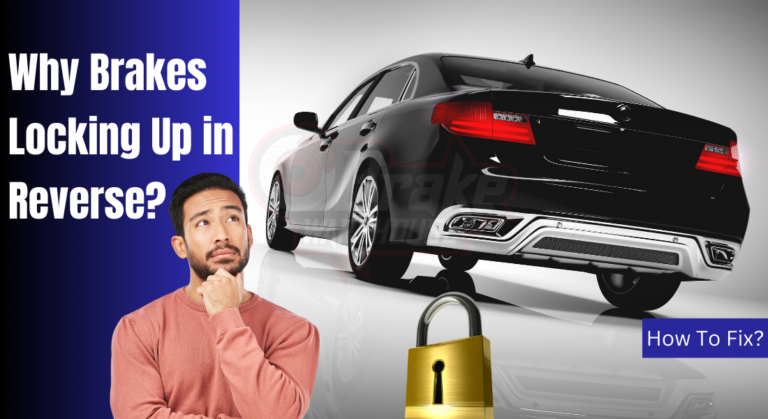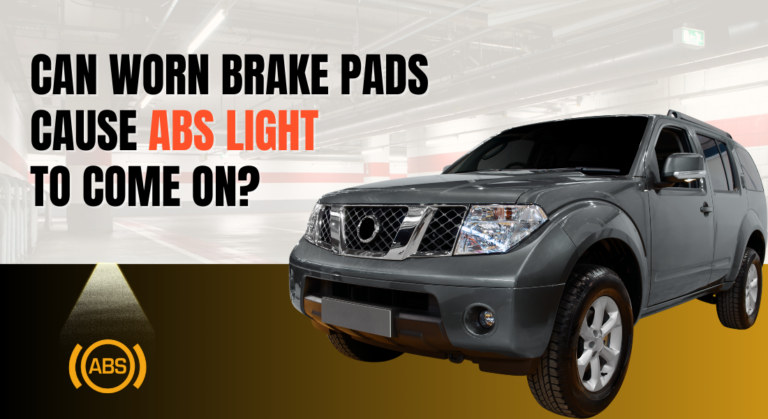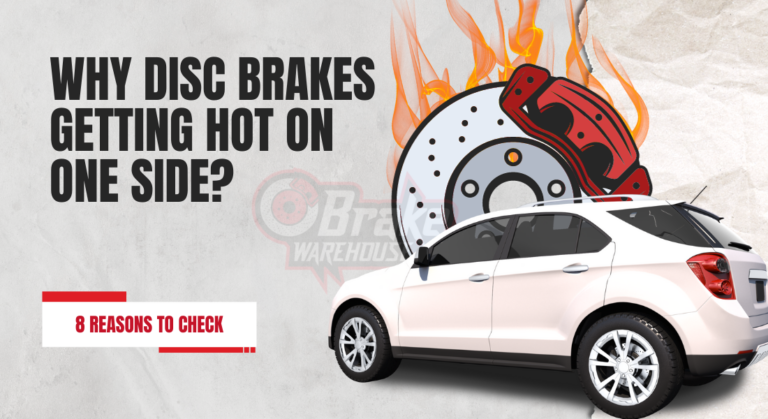Bad Master Cylinder or Air in Brake Lines? Find The Culprit
Defective brakes due to bad master cylinders or air in lines are a fairly common and dangerous problem for vehicles. If you let an issue with the master cylinder or the air-in-lines untreated, you will risk the overall safety of your car.
The master cylinder creates and distributes hydraulic pressure to trigger the brakes. As both a bad master cylinder and air in lines create issues with brakes, you often confuse which one is the culprit.
We aim to emphasize the differences between a bad master cylinder and air-in-line problems. We will also discuss the possible solutions to these problems. Let’s read forward.
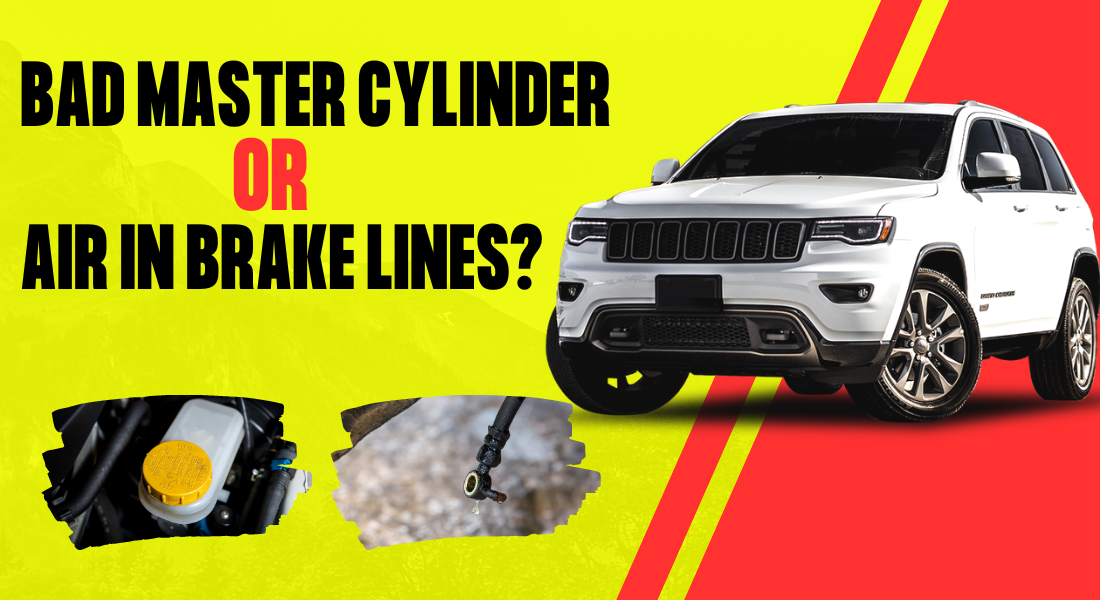
Bad Master Cylinder or Air in Brake Lines?
A bad master cylinder is a malfunctioning or faulty component in a vehicle’s brake system. Conversely, “air in lines” refers to air or trapped air bubbles within the brake lines of a vehicle’s braking system. Both of these are essential to the functioning of brakes.
You will be able to identify a failing or defective brake by looking at some signs. You can notice a vibrating problem or a squeaking issue. You can also detect leaked brake fluid in some cases. However, the probability that the root of these issues is the same is very low.
Usually, if you find the brake fluid is leaking, it indicates a master cylinder problem. And if you find your brake is ineffective, the car has an air-in-line problem. Nevertheless, if you experience either of these two, a lot of issues can become apparent.
Read Also: Master Cylinder Failure After Brake Job – Why & How To Fix?
What Are The Signs Of A Bad Master Cylinder?
You can consider a vehicle’s master cylinder a direct indicator of brake health. Moreover, you can detect whether you have a failing or bad master cylinder by judging the indicator signs and symptoms of its potential problems.
Here, we have listed some common signs and possible solutions for a bad master cylinder:
1. Soft or Spongy Brake Pedal
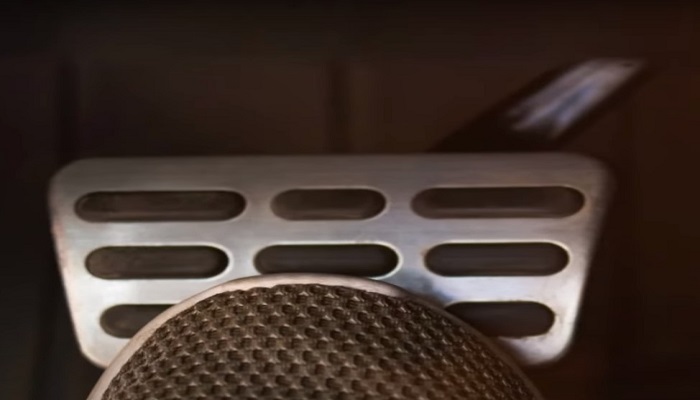
If you press the brake pedal and it feels mushy or shows little resistance, your automobile has a soft or spongy brake pedal.
This problem indicates an issue with hydraulic pressure. Also, you can be sure that the car has an internal leak or master cylinder issue.
You can temporarily solve this problem by flushing the brake fluid. To permanently get rid of this problem, you have to install a new master cylinder.
2. Leakage of brake fluid
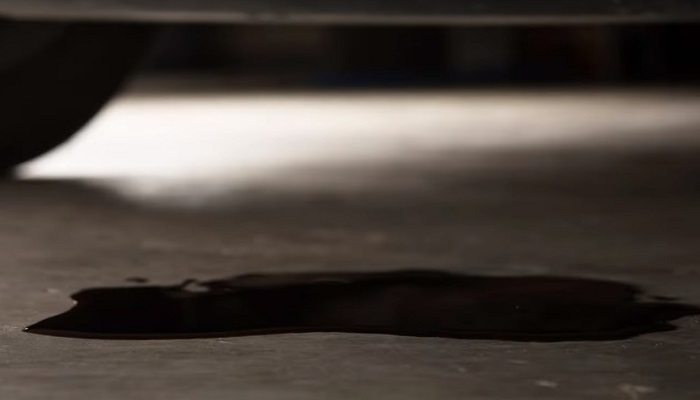
Your car’s bad master cylinder can develop leaks, either internally or externally. When a leak appears, you will notice some brake fluid coming from the master cylinder or around the brake booster. We have shared some of the indicator signs, which are as follows:
- You can see some puddles or drips under the vehicle
- You will notice a lower level of brake fluid
- You may see a warning light on the dashboard
- You can also notice a change in the braking performance
You should check the lid of the master cylinder and tighten it properly. If this does not solve the issue, you need to change the master cylinder.
3. Contaminated Brake Fluid
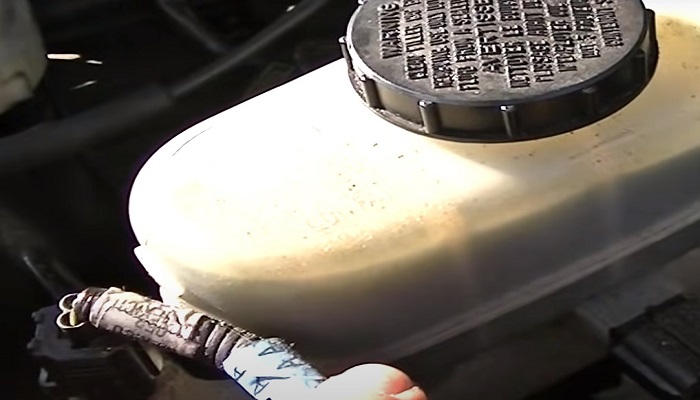
If your vehicle’s master cylinder seals deteriorate or some internal components fail, contaminants can enter the brake fluid.
Contaminated brake fluid will appear dirty or contain particles. It will affect your braking performance severely.
If you detect that your brake fluid is contaminated, you need to flush it thoroughly. However, to permanently fix this, you have to replace the master cylinder.
4. Uneven Braking
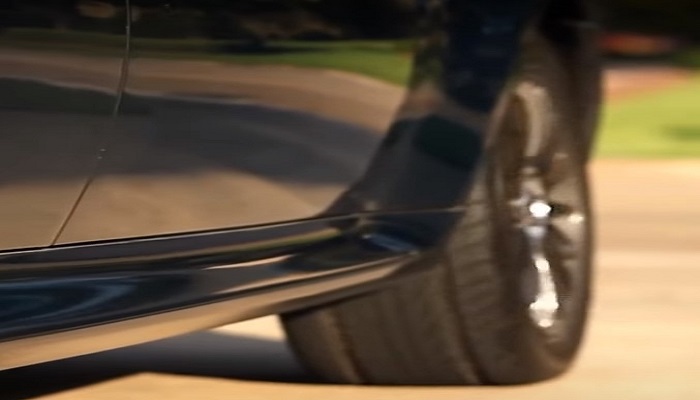
Sometimes, your automobile’s master cylinder will not distribute hydraulic pressure evenly to the different brake circuits or wheels. As a result, you will notice uneven braking.
You will feel that some of your car’s wheels are engaged more forcefully than others and that you cannot pull your car when needed.
You can try to solve this problem by replacing the brake piston and seal. If after doing this, the problem still exists, you need to replace your old master cylinder.
5. Brake Warning Light
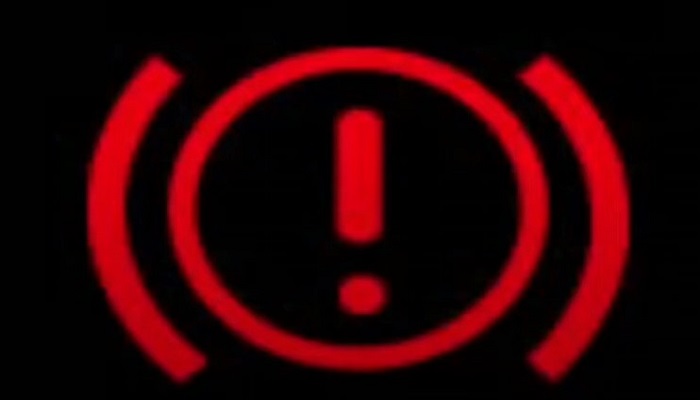
Sometimes, you can see a brake warning light illuminate your car’s dashboard. This warning light denotes a brake system issue that requires immediate attention.
When you resolve the problem with the braking system or master cylinder, the brake warning light will shut off automatically.
Read Also: Brake Pedal Goes to Floor after Bleeding – Why & How To Fix?
How Can You Detect Air In Brake Line Issues?
Braking lines are normally constructed of rubber or metal and are responsible for transporting braking fluid.
Usually, you will find them connected to the master cylinder. If air gets stuck in those braking lines of your vehicle, the brake can even fail, leading to a tragic incident.
Here we focused on some common signs of air in lines:
1. Noise Coming from the Brake System
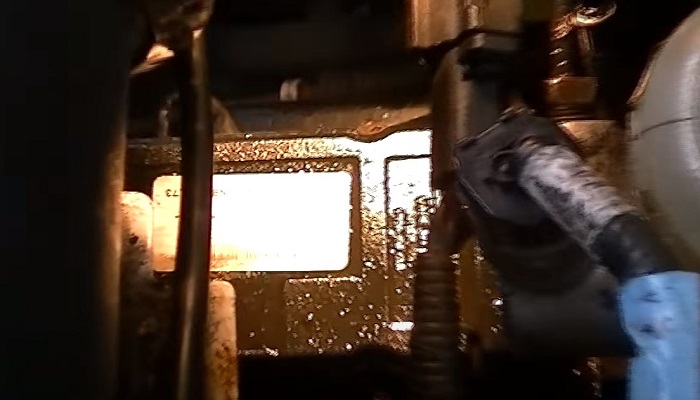
When you apply the brake, the air in your brake lines will generate unusual noises. Also, you will hear a hissing sound or “whooshing” noise with the actuation of the brakes. If you hear these noises, it is an indication of the presence of air moving through the brake lines.
You can fix this problem just by letting the trapped air out. You should try bleeding to remove the air from the brake lines.
2. Inconsistent Braking
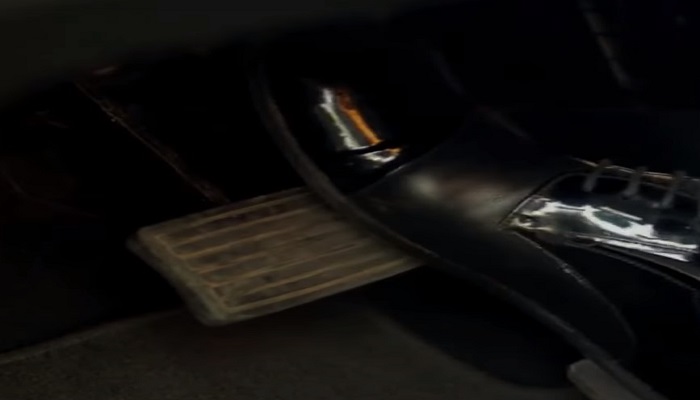
If your car has an air-in-line issue, it can cause inconsistent or unpredictable braking behavior. You will feel that the braking system is less stable, which makes it harder to control during braking.
You can change the brake pads to see if the problem is solved. If it does not, you have to detect the trapped air and bleed the car.
3. Vibrations or Pulsations
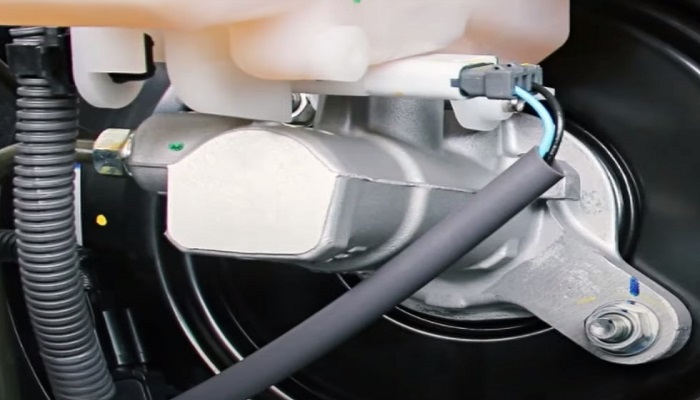
When air-in-lines happen, it can cause uneven pressure distribution. You will feel vibrations coming from the brake pedal when you step on it. These vibrations can indicate that the brakes are not engaging uniformly.
You can address this problem temporarily by damping the brake lines. However, for a permanent solution, you need to perform bleeding.
4. Longer Brake Pedal Travel
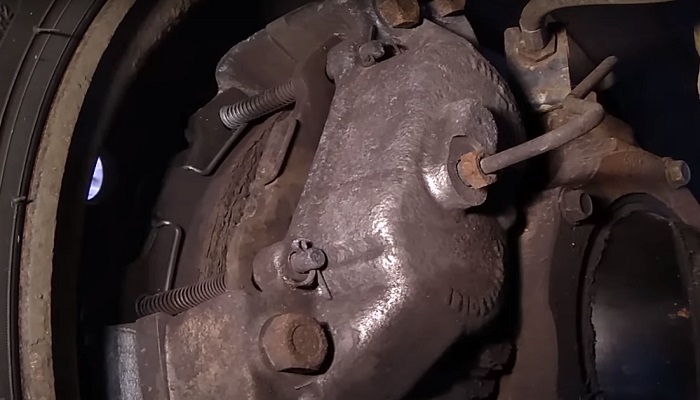
Air in lines hinders your vehicle to stop at the right moment and increases pedal travel. This increased pedal travel can result from air occupying space within the brake lines.
Thus, you need to apply more force to transmit the hydraulic pressure and engage the brakes effectively.
If you face this, the only possible solution is to bleed your automobile and let the air out of the brake lines.
Read Also: Do I Need to Pump The Brakes After Adding Brake Fluid?
How do I Fix the Bad Master Cylinder? Step by Step Explanation
You have to replace a bad master cylinder as soon as the issue is noticed. You can rebuild a master cylinder if one or a few of its parts are damaged. Otherwise, you need to replace the full master cylinder.
To reset a bad master cylinder, you have to follow the steps mentioned below:
Step 1– You have to take out the master cylinder.
Step 2 – Then, remove the rubber boot.
Step 3 – After that, you have to take off the circlip.
Step 4 – Now, you should remove the piston and the spring.
Step 5 – After inspecting, you have to clean the cylinder.
Step 6 – Now, attach the new seals to the new piston.
Step 7 – You can install the new spring now.
How Do I Fix the Air-in-line Problem? Step-by-Step Explanation
If you want to fix the air in the brake lines issue, you ought to perform a process called “bleeding the brakes”. We have discussed how to do it below.
Step 1 – You have to gather the necessary tools and materials:
- Brake bleeding kit
- Wrench or socket
- Fresh brake fluid
Step 2 – Now, you have to jack the automobile on solid ground and make sure the brake lever is in the up position.
Step 3 – Then, you should locate the brake caliper assembly or drum brakes by removing the tires.
Step 4 – After this, let’s locate the bleed screws for all wheels.
Step 5 – You can start with the brake that is farthest away from the master cylinder.
Step 6 – You have to make sure the master cylinder reservoir is always full.
Step 7 – Now, place one plastic hose’s end over the first bleed screw and connect the other to an empty bottle.
Step 8 – You should ask an assistant to apply pressure by holding the brake pedal.
Step 9 – Now, you have to observe the fluid reservoir for any tiny movement when applying the brakes and repeat the procedure for each bleed bolt.
Step 10 – This time, you can put the bleeder screws in place.
You will get some idea after watching this YouTube video:
FAQs
Let’s look into some of the most common queries people have regarding bad master cylinders!
How Can I Test A Brake Master Cylinder?
You need to press the plunger into the master cylinder’s back and hold it in place with a screwdriver. If the plunger keeps going in, at least one of the internal seals is broken.
What is the replacement cost of a bad master cylinder?
A brake master cylinder replacement typically costs between $240 and $520. Labor costs are predicted to range from $98 to $173, while parts are priced between $160 and $320.
Can air-in-lines still happen after bleeding?
If the root cause is not resolved or the bleeding is not done properly, air can get stuck again.
Final Words
A bad master cylinder or air-in-lines problem greatly depends on the owner’s driving methods and the vehicle’s model. Above all, the vehicle should be inspected and checked regularly to avoid any future trouble.
Also, as you know how to solve these problems, you can simply replace the faulty components. With that being said, hope you found what you’re looking for. It’s better to be safe than sorry, thus, be double sure about your vehicle’s condition at all times. Good luck and drive safely!

Meet Zayan, the mechanical genius behind the highly acclaimed brakes problems and solutions website. With over a decade of hands-on experience in the automotive industry, Zayan has become a trusted authority in the realm of brake systems.
His passion for cars, coupled with his expertise in solving complex brake-related issues, has earned him a devoted following of car enthusiasts, mechanics, and everyday drivers seeking reliable guidance.
